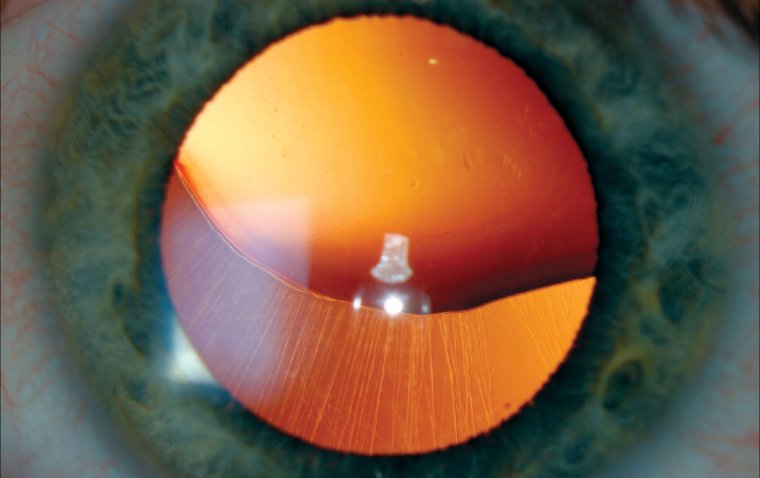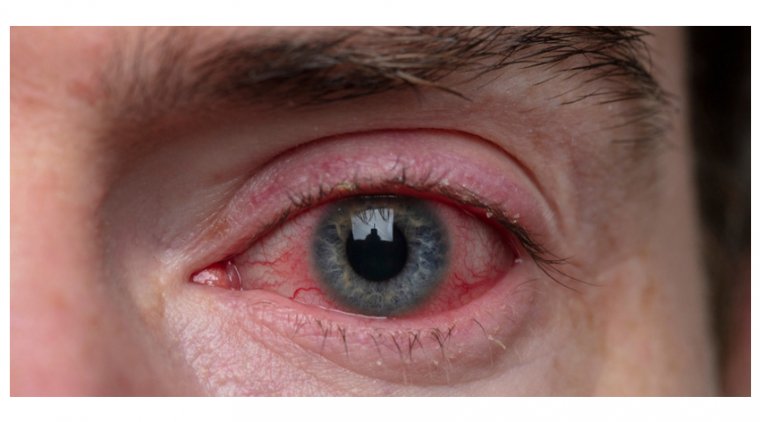
2023 Recap: Top 12 Novel Gene Therapies for Eye Diseases and Blindness
In a groundbreaking era of medical research, scientists and clinicians are spearheading novel gene therapies that hold promise for transforming the landscape of eye disease treatment. These cutting-edge interventions address a spectrum of conditions ranging from Usher Syndrome and retinoschisis to retinitis pigmentosa, glaucoma, and wet age-related macular degeneration (AMD).
Here are the top 12 gene therapies that are making waves in the field of ophthalmology:
1. Teen Regains Vision with Gene Therapy
.jpg)
In a groundbreaking clinical trial, 16-year-old Aiden Van De Rostyne-Moore experienced a life-changing moment as she regained her vision after years of blindness caused by Leber congenital amaurosis. This transformative outcome was made possible through an experimental gene therapy treatment developed by Atsena.
At the core of Atsena's experimental gene therapy for LCA lies a sophisticated approach. Tiny molecular machinery is dispatched to the retina at the back of the eye with the goal of restoring a functional version of a crucial gene essential for vision.
Atsena's ATSN-101 gene therapy specifically focuses on delivering functional copies of the GUCY2D gene, pivotal for vision, to the retina. This innovative treatment method involves sending molecular machinery to the rear of the eye, where it can supply the essential gene, replacing the mutated one responsible for the blindness in individuals like Aiden. The result is a groundbreaking advancement that enabled Aiden to witness the beauty of snowflakes for the very first time in her life.
2. Mini Gene Therapy for Usher Syndrome Type 1F
.jpg)
A milestone in gene therapy for Usher Syndrome type 1F has been achieved by a collaborative team from Harvard Medical School, Massachusetts Eye and Ear, and The Ohio State University.
The researchers developed a "mini-gene," a truncated variant of the gene commonly mutated in Usher Syndrome type 1F cases. This mutation hampers the inner ear's hair cells from generating a vital protein crucial for sound transmission. When introduced into mice, the mini-gene prompted heightened production of the absent protein. This, in turn, enabled the hair cells to regain their ability to detect sound, effectively restoring the capacity for hearing.
3. Experimental Gene Therapy for Wet AMD
.jpg)
UC Davis Health ophthalmologists applied an experimental gene therapy to treat wet age-related macular degeneration (wet AMD) in a patient, representing the inaugural utilization of gene therapy at the UC Davis Eye Center.
This intervention was part of a phase 3 clinical study employing a randomized, partially masked, controlled methodology to evaluate the effectiveness and safety of ABBV-RGX-314, an experimental therapy designed for wet AMD.
UC Davis Health is one of 93 U.S. sites participating in this clinical trial. Currently, three patients are enrolled in the clinical trial at UC Davis Health, with plans to expand the participant pool in the near future.
4. Gene Therapy Reverses Vision Loss in Primates
.jpg)
In a significant advancement in gene therapy, scientists have made a breakthrough, showcasing its potential to reverse vision loss in primates and laying the groundwork for potential treatments in humans. A collaborative effort led by Harvard Medical School and Life Biosciences has successfully employed a novel approach in preclinical studies, reprogramming genetic markers to restore visual function in primates that had experienced eye damage induced by lasers.
The team administered special chemicals into the eyes of the primates, inducing a partial reprogramming of cells to a more youthful state. This technique yielded promising results in the restoration of vision. However, further research is imperative to substantiate and validate these initial findings.
5. FDA-Approved Gene Therapy for Retinoschisis
.jpg) Atsena Therapeutics has revealed that the US Food and Drug Administration (FDA) granted approval for the company's investigational new drug (IND) application, paving the way for a phase 1/2 clinical trial of ATSN-201. This therapeutic initiative is designed to address patients with X-linked retinoschisis (XLRS).
Atsena Therapeutics has revealed that the US Food and Drug Administration (FDA) granted approval for the company's investigational new drug (IND) application, paving the way for a phase 1/2 clinical trial of ATSN-201. This therapeutic initiative is designed to address patients with X-linked retinoschisis (XLRS).
A key element of ATSN-201 is AAV.SPR, a groundbreaking spreading capsid developed by the company. This component plays a crucial role in overcoming challenges commonly associated with intravitreal delivery of AAVs for XLRS treatment.
6. Revolutionary Gene Therapy for RP Enters Human Clinical Trials
.jpg) Michigan State University researchers have successfully conducted a gene therapy trial on dogs affected by an inherited eye disease, signaling promising outcomes. This therapy is now in the process of being prepared for clinical application in human patients dealing with the rare condition known as retinitis pigmentosa.
Michigan State University researchers have successfully conducted a gene therapy trial on dogs affected by an inherited eye disease, signaling promising outcomes. This therapy is now in the process of being prepared for clinical application in human patients dealing with the rare condition known as retinitis pigmentosa.
In both humans and dogs, there exists a gene called cyclic nucleotide-gated channel beta 1 (CNGB1), and when mutated, it can lead to eye diseases. Dogs may develop a type of progressive retinal atrophy, while humans can experience a form of retinitis pigmentosa akin to the progressive retinal atrophy observed in dogs.
The positive results observed in the gene therapy applied to dogs with progressive retinal atrophy due to CNGB1 gene mutations have set the stage for the development of a similar therapy for individuals afflicted with CNGB1-retinitis pigmentosa.
Explore promising early testing of gene therapy for retinitis pigmentosa by researchers
7. Potential Treatment for Color Blindness
.jpg)
For years, color blindness, a prevalent visual impairment affecting millions globally, has been deemed untreatable. Yet, recent progress in genetic therapy is instilling hope for those grappling with complete color blindness. This innovative therapy has shown encouraging outcomes, allowing individuals to perceive the color red to a certain extent.
A study led by Ayelet Mckyton and her research team at the Hebrew University of Jerusalem conducted a limited-scale experiment targeting individuals diagnosed with achromatopsia, a rare variant of color blindness. The participants witnessed notable enhancements in their capacity to differentiate red objects from their surroundings.
Click here to read the full article.
8. Doubling Total RPE65 Protein Levels in Mice with RP
.jpg)
A study published in Human Gene Therapy, has uncovered intriguing insights into the overall RPE65 protein levels in mice affected by autosomal dominant retinitis pigmentosa. The research showcased a noteworthy twofold increase in these protein levels following the subretinal administration of adeno-associated virus (AAV)-RPE65 gene supplementation.
Led by Debra Thompson and coauthors from the University of Michigan Medical School, the study scrutinized gene supplementation in mice carrying a monoallelic mutation responsible for encoding a rare D477G RPE65 variant, identified as D477G KI mice. These mice exhibited diminished levels of total RPE65 protein due to the heterozygous mutation. Subsequent to the treatment, the introduced recombinant RPE65 was observed to selectively localize to the retinal pigment epithelium and remained stable for a minimum of 6 months post-injection.
Discover how gene therapy increases RPE65 protein levels in retinitis pigmentosa through innovative research.
9. Researchers to Conduct Gene Editing Therapy Trial for Blindness
.jpg)
Supported by recent funding from the National Institutes of Health (NIH), the team of researchers at the Wisconsin Institute of Discovery is poised to spearhead gene editing therapy targeting two diseases linked to blindness.
Over the next five years, this collaborative initiative will utilize the $29 million NIH grant to combine innovative drug delivery systems with cutting-edge CRISPR genome technology, ushering in a transformative era in treatment approaches for Best Disease (BD) and Leber Congenital Amaurosis (LCA). These hereditary conditions currently pose challenges as there are no effective therapeutic interventions available.
Learn about UW researchers conducting a gene-editing therapy trial aimed at treating blindness.
10. Novel Gene Therapy for Glaucoma
.jpg)
Scientists from Trinity College Dublin, in collaboration with the biotechnology company Exhaura Ltd., have achieved a significant breakthrough in the development of a novel therapeutic treatment for glaucoma.
The team at the Smurfit Institute of Genetics demonstrated that a gene therapy-based approach can effectively reduce intraocular pressure in pre-clinical models of glaucoma. Published in the journal Science Advances, the study revealed that a single injection of a viral vector could enhance the flow of aqueous fluid from the front of the eye, leading to a decrease in eye pressure. The engineered viral vector instructed cells to produce an enzyme matrix, specifically metalloproteinase-3 (MMP-3), initiating the fluid flow process.
11. Restoration of Vision in Teens with Leber Congenital Amaurosis
.jpg)
Two retinologist surgeons at the Maisonneuve-Rosemont Hospital ophthalmology clinic have achieved a groundbreaking feat in gene therapy on an 11-year-old boy, providing a beacon of hope for individuals grappling with degenerative, genetic eye conditions.
This pioneering surgery, performed on William Khayrallah, stands as the first of its kind in Quebec and marks the inaugural publicly funded gene therapy operation in Canada.
Taking place two weeks apart, the procedure involved the administration of Luxturna, an advanced gene therapy drug developed in the United States. Luxturna is designed to counteract Leber congenital amaurosis (LCA), a rare genetic disorder with the potential to lead to complete blindness. By specifically targeting the underlying genetic mutation responsible for the disease, Luxturna presents a promising solution to restore sight to individuals affected by this condition.
12. Promising Gene Therapy for Retinitis Pigmentosa in Early Testing
.jpg)
Individuals with retinitis pigmentosa typically undergo vision changes during childhood or early adulthood. This condition commonly leads to a deterioration in peripheral and night vision, ultimately progressing to blindness in the majority of cases.
A research team from the University of Florida College of Medicine has developed a gene therapy that has shown success in three distinct animal models.
In mice, the researchers employed this therapy to target malfunctioning genetic material impacting the light-sensing photoreceptors in the retina, both suppressing and replacing it. This was achieved through the use of an engineered virus delivering a functional copy of the gene to the eyes. Over a nine-month experiment, the therapy resulted in improved retinal structure and function. These significant findings were recently published in the journal Vision Research.
Explore promising early testing of gene therapy for retinitis pigmentosa by researchers.
Conclusion
As these gene therapies progress through clinical trials and garner regulatory approvals, the future holds immense promise for individuals affected by various eye diseases, offering newfound hope for improved vision and quality of life. The collaboration between researchers, clinicians, and pharmaceutical companies is instrumental in propelling these transformative therapies towards widespread accessibility and impact.
(1).jpg)










